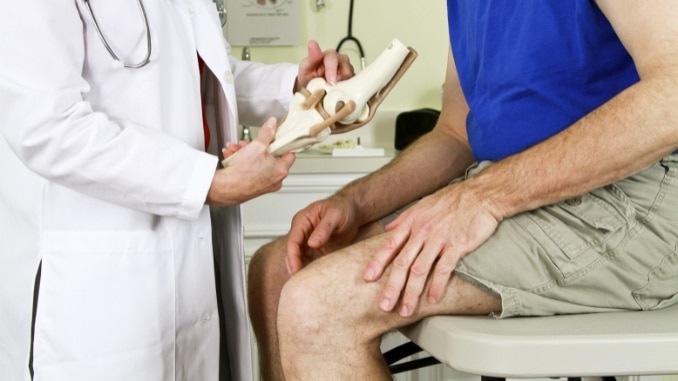Your knees do a lot for you. Every step, jump, squat, or climb depends on them. Whether you’re an athlete chasing goals, someone who just loves staying active, or you’re simply trying to keep up with daily life as you get older, your knee cartilage is the secret hero.
Damage to the cartilage [1] in the knee is a common problem in young or active people. And here’s the kicker: once that cushion gets hurt, it doesn’t heal itself very well. That’s why so many end up with nagging knee pain, stiffness, or even arthritis later on.
And since you landed here, I know what’s going through your mind: “Do I really have to go under the knife to fix this?” Stick around—because we’re about to uncover effective methods for knee cartilage repair without surgery that most people don’t even know exist.
1. Straight Leg Raises
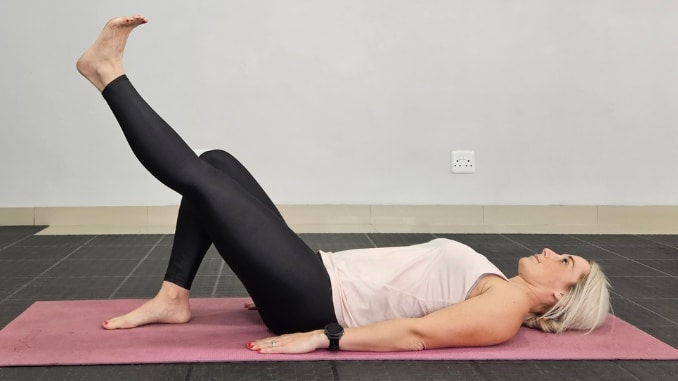
- Lie on your back with one knee bent and the other leg extended straight on the floor.
- Place your arms at your sides for support and engage your core.
- Slowly lift your straight leg to the height of your bent knee, keeping the movement controlled.
- Hold briefly at the top, then lower your leg back down to the starting position.
- Repeat the movement for 3 sets of 5 repetitions on each leg.
2. Heel Slides
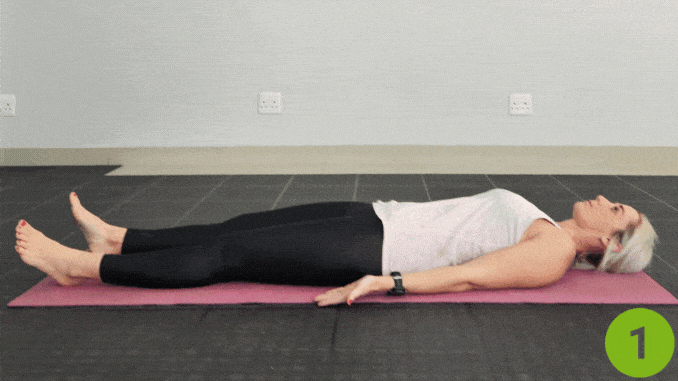
- Lie on your back with your legs extended and arms relaxed at your sides.
- Engage your core and slowly bend one knee, sliding your heel toward your buttocks while keeping your foot in contact with the floor.
- Pause briefly, then slide your heel back to the starting position.
- Keep your movements smooth and controlled throughout.
- Repeat the movement for 3 sets of 5 repetitions on each leg.
3. Mini Seated Squats

- Begin in an upright standing position in front of a chair, with your feet hip-width apart and your arms crossed in front of your chest.
- Engage your core and slowly bend your knees to lower your hips toward the chair, stopping just before you sit.
- Keep your weight in your heels and maintain good alignment with your head, shoulders, and hips.
- Press through your heels to return to the starting position.
- Repeat the movement for 3 sets of 5 repetitions.
4. Step-Ups (Low Step)
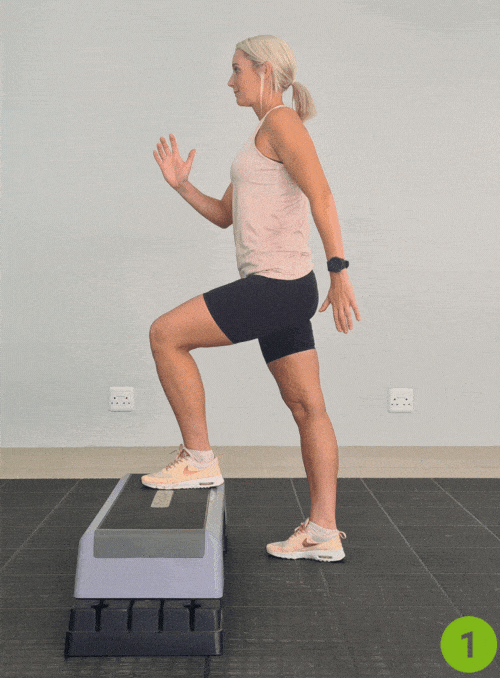
- For this exercise, you can utilize the plyometric box, stair, or bench for support if needed.
- Stand in front of a box or a stair.
- Place your right foot on top of the box, stair or bench, then push yourself up onto it.
- Then slowly step down with your left foot.
- Perform The next step with the left foot leading first, alternating them throughout the exercise.
- Repeat the movement.
Understanding Knee Cartilage Damage
Think of cartilage as the cushion or padding inside your knee. It’s smooth, strong, and built to handle pressure every time you walk, run, or jump. Its main job? Absorb shock and keep your knee moving without friction—like oil in an engine.
But here’s the bad news: that cushion isn’t indestructible. Cartilage damage can happen for a lot of reasons—maybe from a sudden injury, years of overuse, aging that naturally wears it down, or even carrying extra weight that puts too much stress on the joint.
When cartilage takes a hit, you’ll know it. The usual signs include:
- Pain that doesn’t go away
- Stiffness in the joint
- Less mobility (like struggling to bend or straighten fully)
- Swelling after activity
- A “grinding” or cracking feeling when you move
Now, a lot of people jump straight to thinking, “Okay, surgery will fix this, right?” Not so fast. Surgery isn’t always the first—or best—option. It can mean long recovery times, possible complications, and the results aren’t always perfect. That’s why more and more people are looking into non-surgical ways to manage cartilage damage before going under the knife.
Lifestyle & Preventive Approaches
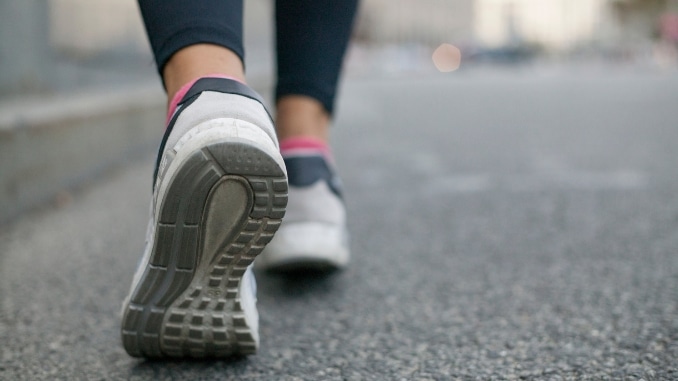
- Keep a healthy weight – Less stress on your knees will help knee cartilage repair without surgery.
- Go low-impact – Cycling, swimming, or walking are easier on joints than running
- Warm-up and stretch – Prevents sudden strain
- Avoid major injuries – Protecting your ACL and meniscus also protects cartilage
Small changes now can save your knees from bigger problems later.
Non-Surgical Treatment Options
You don’t always need surgery to manage knee cartilage damage. These options can help:
- Physical therapy – Strengthens muscles to take pressure off cartilage
- Bracing/supports – Reduce stress on damaged areas
- Activity tweaks – Swap high-impact workouts for low-impacts ones
- Supplements & nutrition – Glucosamine, chondroitin, collagen, omega-3s, vitamin D may support joint health.
Injections:
- Hyaluronic acid [2] : Adds lubrication. HA is considered part of the pharmacologic class of slow-acting drugs for osteoarthritis treatment.
- PRP (platelet-rich plasma): encourages healing.
Dr. Chu emphasizes that the healing power of PRP injections (platelet-rich plasma) can vary depending on the donor—specifically their age and overall health. For older or less healthy individuals, PRP may increase inflammation instead of promoting healing, which underscores the importance of personalized treatment. - Stem cells: still experimental, but promising.
These treatments aim to protect, support, and sometimes even repair cartilage—without going under the knife.
Emerging Non-Surgical Techniques

New treatments are pushing cartilage care further:
- Shockwave & ultrasound therapy – may boost healing and reduce pain.
- Biologic treatments – research into regenerating cartilage with advanced methods.
- Better imaging – spotting cartilage damage earlier, without invasive tests.
Better in Turmeric → source of curcumin
- Green tea → source of EGCG
- Salmon, shrimp, lobster, krill, algae → sources of astaxanthin
- Spinach, kale, broccoli, corn, eggs → sources of lutein
- Gentle mobility – light exercises keep joints moving and aging – spotting cartilage damage earlier, without invasive tests.
These are still developing but show real promise for the future of knee health.
At-Home Strategies
Simple steps can help manage cartilage pain day to day:
- RICE – rest, ice, compression, elevation for flare-ups.
- Eat anti-inflammatory foods [3]– cut processed foods, add more antioxidants.
Small habits like these can make your knees feel better and last longer.
Conclusion
Surgery is not the only answer for knee cartilage problems. With smart lifestyle changes, physical therapy, and exciting new non-surgical treatments, many people are able to manage pain, protect their joints, and even improve cartilage health without going under the knife.
If you’re struggling with knee pain or worried about cartilage damage, don’t wait until it gets worse. Talk to a specialist about the non-surgical options that could work best for you—and give your knees the care they deserve.
A recent study published in the prestigious New England Journal of Medicine shows that after one year there is no significant difference between repairing a meniscus tear through surgery and repairing one through physical therapy (exercise).
Are you tired of knee pain keeping you from doing what you love? Wouldn’t it be great to ease that pain without leaving your house? Good news: You can treat your knee pain at home in just 10 minutes a day. Check out Knee Pain Solved now!
Frequently Asked Questions
How can I rebuild my knee cartilage naturally?
The knee joint works best when the muscles around it are strong and flexible. While damaged cartilage doesn’t fully heal on its own, you can protect it with low-impact exercise, good nutrition, and weight control. Some research shows that supporting cartilage cells through lifestyle and supplements may help slow damage and ease knee cartilage pain.
Which medicine is best for cartilage repair?
If you want to repair knee cartilage, an orthopedic surgeon may suggest different options. These include platelet rich plasma (PRP) injections, stem cell therapy using bone marrow cells, or other treatments for knee cartilage repair without surgery. While none of these fully rebuild cartilage, they may support cartilage regeneration and improve comfort.
How long does knee cartilage repair without surgery typically take to heal?
Healing depends on how serious the damage is. Small injuries may improve in weeks, while larger ones may take months. True knee cartilage restoration is slow and not always complete, but pain can often be managed with therapy, exercise, and lifestyle changes.

